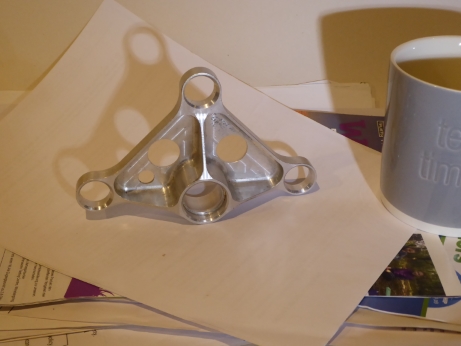Sean Barker runs a Technical consultancy on Enterprise Integration and Information Sharing for Products

This photo shows my paperweight for the last 25 years. The suggestion is that it was a test part, used in a prototype for a flight control mechanism. You might think that it is the physical part that endures long after the design has been lost in an archive, but this piece of metal demonstrates the opposite - it is a part without provenance, so not an aircraft part at all.
Yes, we could measure and redraw it, but that would not be its design. The holes are set where they are because of the geometry of the mechanism, but which mechanism was it designed for? The flanges - the metal ridges round the edges that stand up from the base plate - are there to stiffen the plate. They will have been analysed through a finite element stress model, but without knowing the original mechanism, we don't know the forces the stress model tested. And even if we can find the most likely mechanism, it is likely that it went through several versions, and which version, which loads is this designed for?
And the curves in the corners where the flanges meet the base plate. They are there to avoid the stress concentrations that occur in sharp corners, but the radius will come from a design standard, which itself will have come from a combination of engineering calculation and machine tool selection. But whose design standard? And is it the right one for the mechanism we have identified?
And however carefully we measure the part, we will not be able to find the machining tolerances - the accuracy which the part is manufactured to. Pivots will go through the holes in each corner, but is the inside of the hole a bearing surface? or were separate bearings inserted into the holes? - this will change the machining accuracy required.
And what is the part made from? Aluminium, obviously, but what grade of aluminium? How pure is it? And what casting process did it go through? What was the inspection process for the billet it was cut from? and where are the inspection records that show the billet was defect free?
Without provenance, this is not an aircraft part worth hundreds of pounds, but a piece of scrap metal worth a few pence. It is like a photocopy of a banknote - it looks the same but it is worthless. Digital preservation is not a technical matter of keeping bits and bytes, it is a business problem, and needs to be solved to preserve the value of our assets.
Cheers
Sean
